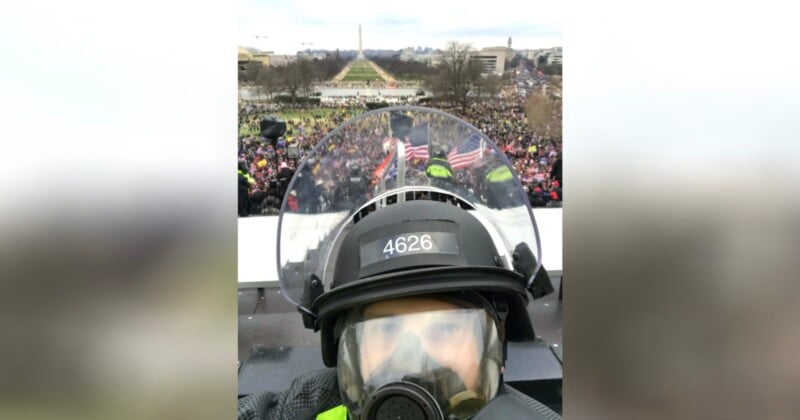How This Selfie Proved a Cop Died in the Line of Duty Nine Days Later

This selfie was taken by a police officer days before he died. The photo would become key evidence in proving his death occurred in the line of duty.
Warning: This article contains references to suicide.
Washington D.C. Metropolitan Police Officer Jeffrey Smith killed himself nine days after confronting rioters at the U.S. Capitol on Jan. 6, 2021.
According to a report by Police1, the selfie taken by Jeffrey nine days earlier played a crucial role in proving that his suicide was directly linked to an injury he sustained during the Capitol riots. The photo helped establish his death as a line-of-duty death — one of the rare instances in the U.S. where an officer’s suicide has been officially recognized as such.
Initially, Jeffrey’s death was not recognized as a line-of-duty death, leaving his widow Erin Smith without survivor benefits or institutional support. What changed the course of everything was a single selfie, according to Police 1.
The photo, taken by Jeffrey amid the chaos, showed him in riot gear with visible bruising under his eyes. In the selfie, he is seen squinting through the plexiglass of a helmet with the visor raised, dark bruises forming beneath his eyes.
The photo was timestamped and geo-located, placing him at the Capitol on January 6, 2021. This image became a pivotal piece of evidence in proving that his injuries were sustained during duty — and that those injuries, including head trauma, contributed directly to his death.
Bodycam footage later confirmed that Jeffrey had been struck in the head with a metal object and his own baton, once in the Capitol building and again outside. His behavior changed immediately afterward: he fumbled with his helmet, showed signs of confusion, and struggled with motor coordination — all signs of traumatic brain injury (TBI). Experts later linked TBI to suicide risk.
In an interview with The New York Times back in 2021, his wife Erin also recalled how Jeff’s mood shifted drastically after his injury — he became withdrawn, deeply unsettled by the day’s events, and unusually quick to anger.
“He was a completely different person,” Erin told The New York Times. “I do believe if he did not go to work that day, he would be here and we would not be having this conversation.”
A sergeant sent him to the Police and Fire Clinic, which handles job-related injuries, where he was prescribed ibuprofen and sent home. After a follow-up visit about a week later, he was ordered to return to work. It was on the way to his shift on January 15, 2021 — nine days after he was injured while on duty — that he shot himself.
Initially dismissed by police and city officials, Erin took up the fight to have Jeffrey’s death recognized. With legal support from Dr. David P. Weber and bipartisan backing in Congress, she successfully pushed for local and federal rulings that classified Jeffrey’s death as a line-of-duty occurrence.
Medical experts retained by Ms. Smith said that he had no history of depression or mental health issues before January 6, and that his death was caused by “post-concussion syndrome,” which can lead to cognitive problems, depression, and suicidal thoughts.
Erin’s landmark victory secured survivor benefits and marked a turning point in efforts to break the silence around mental health and suicide in policing. Jeffrey’s selfie was instrumental in locating video footage, identifying assailants, and proving a timeline of injuries.
The selfie also formed the foundation of Erin’s civil lawsuit against one of her late husband’s attackers David Walls-Kaufman. Last month, a federal jury ordered Walls-Kaufman to pay $500,000 in damages to Erin for assaulting Jeffrey inside the Capitol on January 6, 2021.
Image credits: Header photo via U.S. District Court for the District of Columbia.